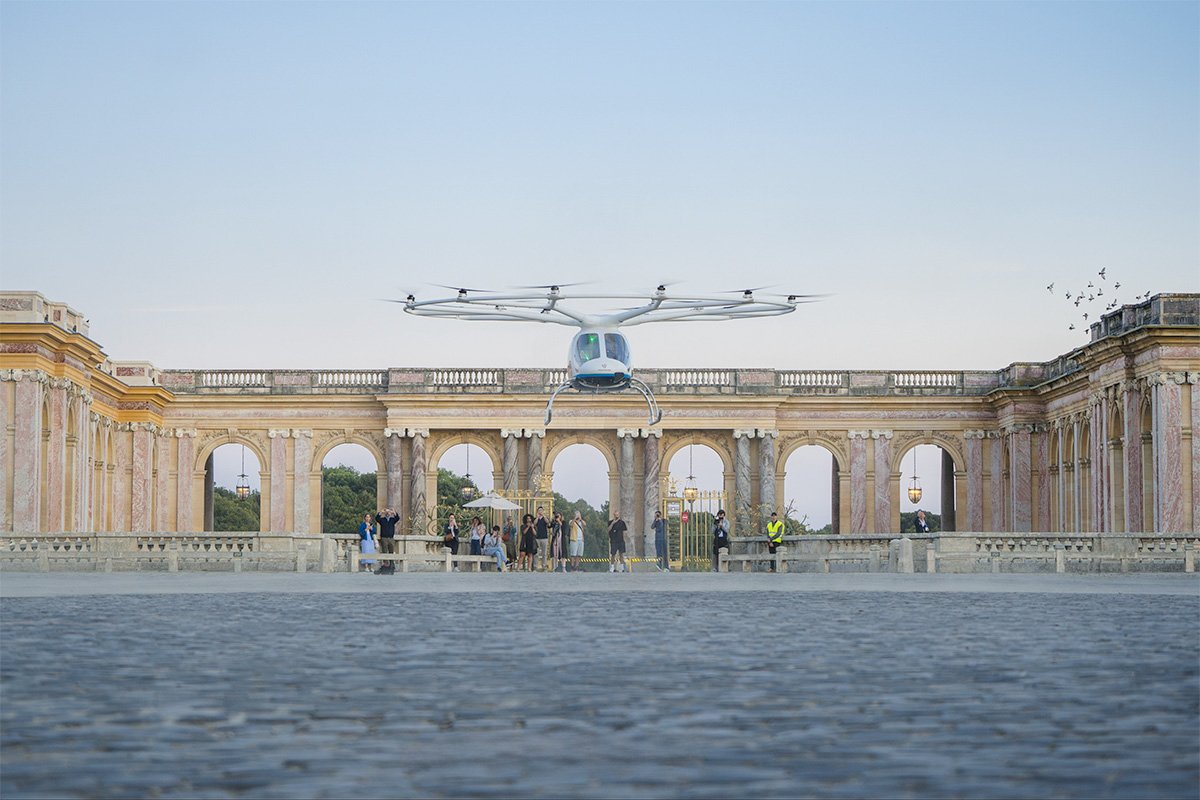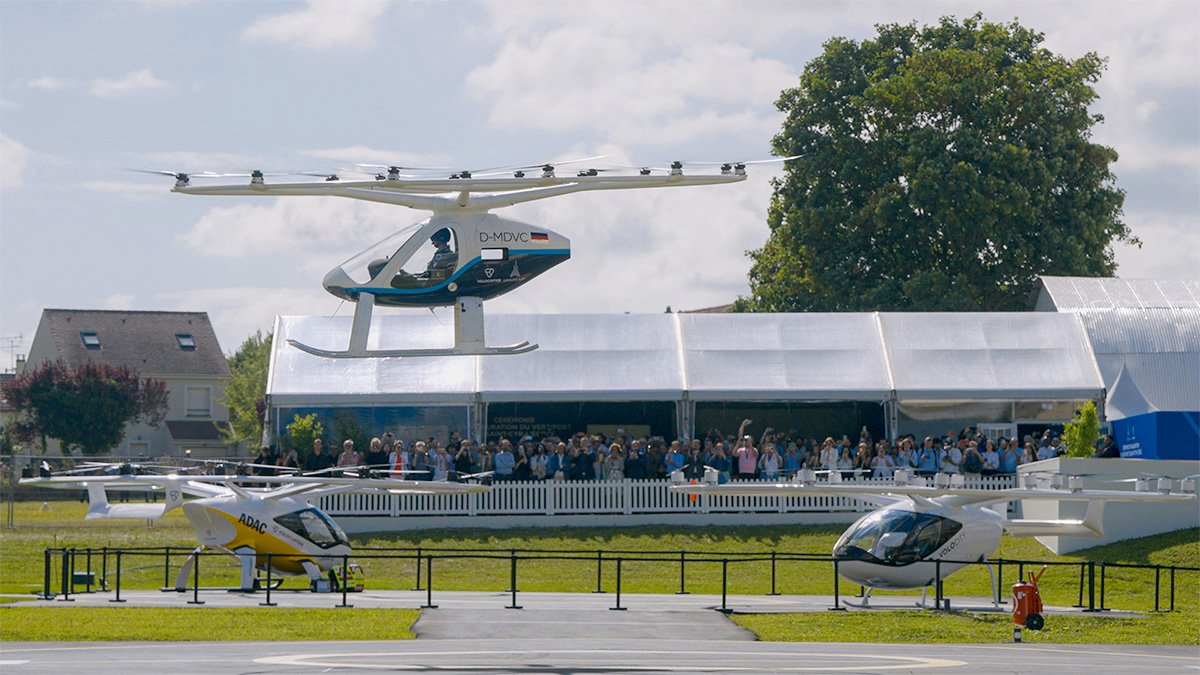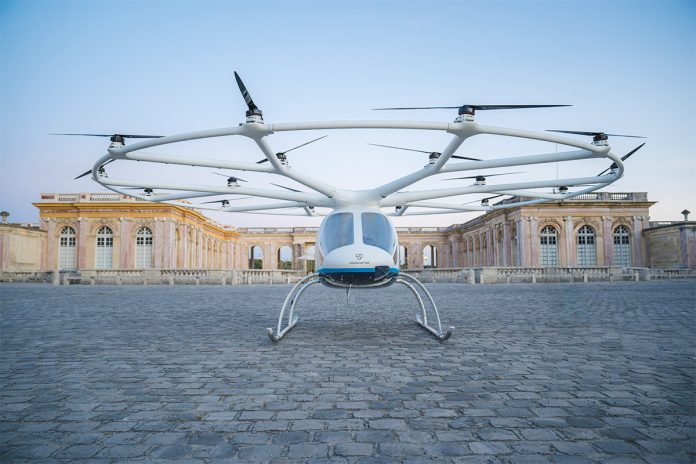Volocopter, a German air mobility company specializing in electric vertical take-off and landing (eVTOL) aircraft, has been making significant strides in operational validation, despite facing setbacks due to regulatory challenges. Over the past few months, the company has been focused on testing its VoloCity air taxi in France, with the ultimate aim of integrating eVTOLs into urban air mobility networks. Two recent events — a missed opportunity to fly during the 2024 Paris Olympics and a successful flight at the Palace of Versailles — illustrate both the hurdles and progress in Volocopter’s journey towards commercial eVTOL services.
Regulatory challenges thwart Paris Olympics flights
On August 9, 2024, Volocopter announced that its plans to trial passenger flights on the River Seine during the 2024 Paris Olympics had been postponed due to certification delays related to the motors powering its 18-rotor VoloCity aircraft. The flights were to take place from a floating platform near the Austerlitz train hub and transport passengers to various vertiports around Paris. The event was eagerly anticipated, given the high-profile nature of the Olympics and the opportunity to showcase cutting-edge air mobility solutions. However, bureaucratic hurdles in Paris, often dubbed the “home of bureaucracy,” led to a deferment of these trial flights.
Despite this setback, Volocopter did not lose momentum. The company shifted its focus to a vertiport located a few miles outside Paris, at the Aerodrome of Saint-Cyr-l’École. Here, it conducted a crewed test flight, marking the start of an intensive pre-commercial test series aimed at validating key technologies. This program, which involves rigorous testing of maneuvers, ground handling, air traffic control communications, and battery charging setups, is expected to conclude with flights around the Palace of Versailles.
Successful eVTOL flight at the Palace of Versailles
On August 11, 2024, Volocopter successfully conducted the world’s first eVTOL flight within the premises of the historic Palace of Versailles. This flight was a significant milestone, not only for Volocopter but for the sustainable air mobility sector as a whole. The flight marked the culmination of a multi-day operational validation campaign, held at both the Aerodrome of Saint-Cyr-l’École and Versailles, showcasing the feasibility of integrating eVTOLs into existing airspace and urban infrastructure.

The flight took place against the iconic backdrop of the Grand Trianon and its surrounding gardens, and was celebrated by Volocopter’s long-standing Parisian partners, Groupe ADP and the French Civil Aviation Authority (DGAC). The success of this flight demonstrates a strong endorsement from French and European aviation authorities regarding the safety and reliability of Volocopter’s aircraft.
Volocopter CEO Dirk Hoke expressed his satisfaction with the progress, highlighting the dedication and professionalism of the Volocopter team. He emphasized that each new location and flight involves substantial effort from the company, its partners, and regulatory authorities, and expressed optimism about returning to Paris to conduct further flights later in the year.
Overview of the VoloCity aircraft
The VoloCity air taxi, the centerpiece of Volocopter’s operations, has undergone extensive development since its initial introduction in 2013. The aircraft features a composite body topped by a 9.3-meter (30-foot) diameter circular frame housing 18 rotors, each powered by its own electric motor. This configuration allows for vertical take-off and landing, making it particularly suited for urban environments where space is limited.

The VoloCity is designed to carry two passengers, with a pilot initially and an option for future autonomous operations. It has a maximum airspeed of 110 km/h (68 mph) and an operational range of 35 km (22 miles) on a single charge from its lithium-ion battery packs. While the range is limited, it is sufficient for short city trips, which aligns with Volocopter’s vision of providing sustainable, on-demand urban air mobility.
To date, the VoloCity has undergone more than 2,000 test flights across multiple prototypes, reflecting the company’s commitment to rigorous safety and performance standards. Volocopter has also collaborated with key stakeholders, including Groupe ADP and the Paris regional government, to build a network of vertiports around the city, laying the groundwork for future eVTOL services.
Looking ahead: The future of eVTOL in urban mobility
Volocopter’s journey in France is a testament to the challenges and opportunities inherent in pioneering new forms of urban air mobility. The postponement of the Olympic trial flights highlights the complexities of navigating regulatory environments, while the successful flight at Versailles demonstrates the potential of eVTOL technology in transforming urban transport.

As Volocopter continues its operational validation and works towards certification, the company remains optimistic about the future of eVTOLs. With plans to return to Paris later in the year and the potential for future collaborations with emergency medical services, the company is positioning itself at the forefront of the emerging urban air mobility market.
Source: Volocopter



